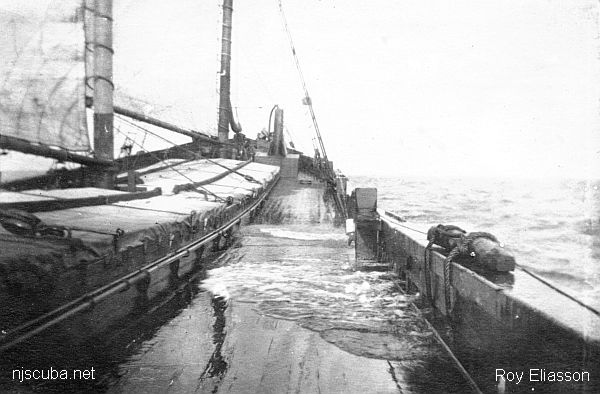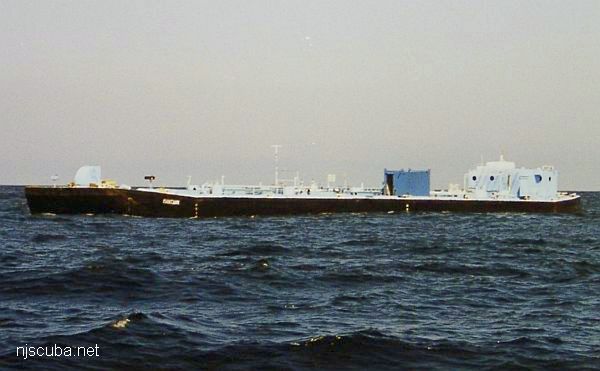Pocopson

- Type:
- shipwreck, schooner barge, USA
- Built:
- 1906, Robert Palmer & Son, Noank CT, USA
- Specs:
- ( 177 x 35 ft ) 721 tons, 3 crew
- Sunk:
- Wednesday October 7, 1936
foundered in storm, no casualties - GPS:
- 40°12.204' -73°59.257' (AWOIS 1990)
- Depth:
- 50 ft

The Pocopson was dynamited after sinking, and large sections of the wooden hull were broken up for firewood. The remaining wreckage is approximately 150 ft long, with no more than 2 ft of relief. Anchor and machinery lie at the bow end, and the entire wreck site is scattered with coal. Details courtesy of Capt. Stan Zagleski of the Miss Elaine B.
from AWOIS: 1517
FE332SS/89 -- OPR-C147-HE-89; CONTACT NO. 15; 50M RANGE SCALE SSS SEARCH WAS PERFORMED OVER THE COORDINATES PROVIDED BY WHITING; DIVERS FOUND THE DETERIORATED REMAINS OF AN OLDER WOODEN WRECK; RISES NO MORE THAN 1-2 FT. ABOVE THE BOTTOM; CONSIDERED INSIGNIFICANT; ECHO SOUNDER AND DIVER LEAST DEPTH OF 48 FT.; BECAUSE OF DETERIORATED CONDITION, COULD NOT POSITIVELY VERIFY IDENTITY, HOWEVER, HECK BELIEVES THIS IS THE ITEM AND CONSIDERS IT RESOLVED. (UPDATED MSM 5/90)


Questions or Inquiries?
Just want to say Hello? Sign the .